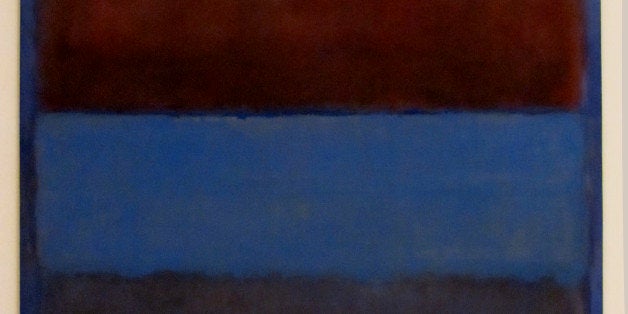
Mark Rothko: Toward the Light in the Chapel
by Annie Cohen-Solal
Yale University Press, 281 pages, $25
What is it that gives the paintings of Mark Rothko their tremendous power? Why do those squares of vibrating color, that seem to float in space, somehow liberated from their canvases, exert such fascination?
Of the depth of emotion they provoke, there is no doubt. In the words of British art historian Simon Schama, who regards Rothko as the equal of Rembrandt or Turner, these paintings are "emotionally stirring and sensuously addictive, emanating an uncanny force field..."
Rothko's development as an artist is the subject of this new study by Algerian-born French scholar Annie Cohen-Solal, which its publisher is promoting as "the only up-to-date biography of the artist available in English."
Cohen-Solal puts forward an interesting hypothesis -- that Rothko's Jewish roots were central to his mature identity as an artist. "This complex relationship to the Talmud is in fact the key to understanding the life and work of Mark Rothko," the author claims. Unfortunately, her argument is unpersuasive.
Markus Rotkovitz was born in the city of Dvinsk (now in Latvia) in 1903. His father, a free-spirited, pharmacist and voracious reader, had chosen secular schools for his first three children -- but decided to send Markus to an orthodox Talmud-Torah. The author speculates that a wave of vicious anti-Semitic pogroms across the Pale of Settlement in 1905 lay behind this decision.
Marcus' Jewish education did not last long. By 1913, the whole family had emigrated to America, settling in Portland, Oregon, and a year after that his father died. The only family member with a Jewish education, the young Markus dutifully recited the daily Kaddish -- until one day the 11-year-old decided that he would never set foot in the synagogue again. And from that point on, his relationship with formal Judaism was at an end.
It is ironic that this book is published by the Yale University Press in light of the miserable time the young Rothko endured at the Ivy League school from 1921-23. Rothko felt excluded by its WASPy elite and dropped out after two years. It was soon after this, in 1923, the author tells us, that Rothko suddenly decided to become an artist. "According to the legend, Marcus Rothkowitz discovered his calling by chance, or rather, by epiphany. One day in 1923, he visited a friend who studied figure drawing at the Art Students League. 'It is the life for me,' he said on the spot."
There's no further discussion in the book of this decisive moment -- what led up to it, what provoked it, how it happened. To quote from the classic Western, 'The Man Who Shot Liberty Valance:' "When the legend becomes fact, print the legend."
Throughout this turgidly-written book, the author occasionally cherry picks facts to back up her thesis that Judaism and Talmud are central to Rothko. "A radical but disciplined scholar, using the rhetorical tools of the Talmud and its tradition of study, he engages in a series of challenging one-on-one conversations with an imposing list of the great names of the past," she declares. In another passage, she argues, again without attribution, that Rothko's artistic quest was a pursuit of Tikkun Olam (repairing the world).
In no sense is this book a true biography. For all the layers upon layers of details lavished on the circumstances of his birth and early childhood, the author skates over Rothko's mature personal life. His last, unhappy years, when he fell into depression and heavy drinking and when his marriage fell apart, are dealt with in a couple of pages. His suicide is dispatched in a single sentence.
Ultimately, this book misses the main point about Rothko, drowning his vision in a welter of words. How did he achieve those shimmering panels of color? Quoting Schama again from his superb BBC documentary The Power of Art, (available on YouTube): "It's not what the colors are that make them work on our senses. It's what they do. Colors in motion, they seem to breath and swell like sails catching the wind...beckoning you into some kind of deep, undefined, radiant yonder."
A few hours pondering these powerful and mysterious expressions of wordless sensation may not explain Rothko any more than one can truly comprehend Bach or Shakespeare -- but they do somehow, bring us closer to the basic emotions that define our humanity.